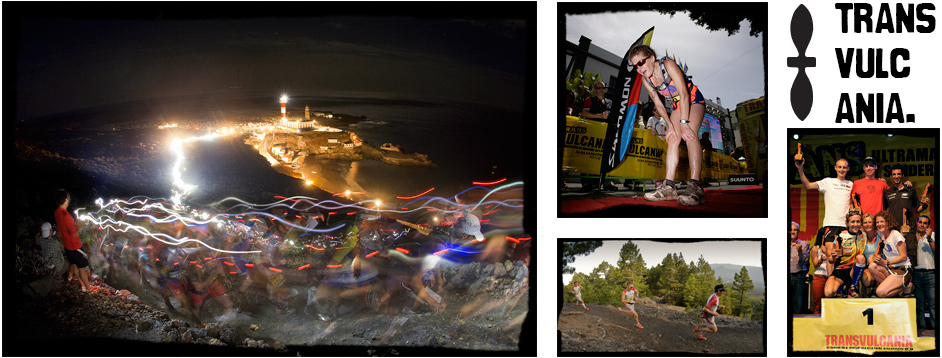Julio Cabrera Rochas had read about runners who raced across mountain ranges. He had seen their pictures online from the Alps, Pyrenees & Rockies. Sweat soaked and dirty, hands-on-knees power hiking up sinewy trails, far below them the clouds resembling a sea of marshmallows. The year was 2008, and Julio, the then Minister of the Environment for the insular government of La Palma looked out his office window in the capital Santa Cruz and had an idea.
La Palma is the third smallest of the seven main Canary islands, only 47km long and 29km at its widest. These modest measurements pale into insignificance when one looks at the landscape that is contained within its rugged coastline. The island, like all in the Canarian archipelago, has been sculpted by the brutal force of volcanic activity and in La Palmas case the results are some of the most spectacular to be found anywhere on Earth.
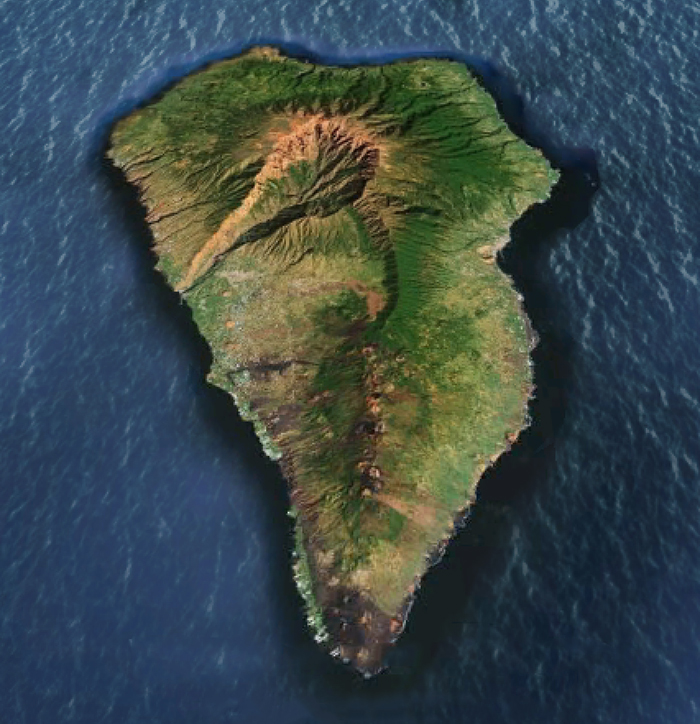 La Palma- home of Transvulcania © TerraMetrics
La Palma- home of Transvulcania © TerraMetrics
As Julio peered through his window at the back slopes of the islands most spectacular feature- the Caldera de Taburiente- it all made perfect sense. “Stunning scenery, the extensive footpath network,” says Julio today. “All these things gave me the idea of creating a mountain race on La Palma, since the Island has all the conditions that make it possible and attractive.” So with the seed of an idea planted Julio began exploring the possible route that his mountain race would follow- it turns out that the course was already there, marked and ready.
La Palmas GR131 trail, named affectionately as the walking stick route – although this name is attributed to its cane-like appearance rather than its leg-buckling tendencies- is the islands pride and joy. Starting at the southern tip of the island at Fuencaliente lighthouse it connects the route of the volcanoes- the islands spine- with the ridge route along the 2000+ meter sawtooth peaks of the Caldera de Taburiente, taking in the islands highest peak, 2426 meter Roques de los Muchachos, before descending all the way to the sea at Tazacorte. If the route of the volcanoes is La Palmas spine than the Caldera- a magnificent ancient erosion crater, open on the western flank above Tazacorte due to a prehistoric landslide- is the islands beating heart. By adding a final climb from the port at Tazacorte to Los LLanos, the islands second capital, Julio had his route- and boy what a route it was- totalling 83,3Km with 4,415 meters of ascent and 4,110 meters of descent. Its name, Transvulcania. “It was very demanding but I knew that large accumulated altitude and to run different types of terrain were the most valued aspects for runners.” he says. “The GR131 largely complies with these issues and that is why I ventured to go for this project. I was convinced it would work.”
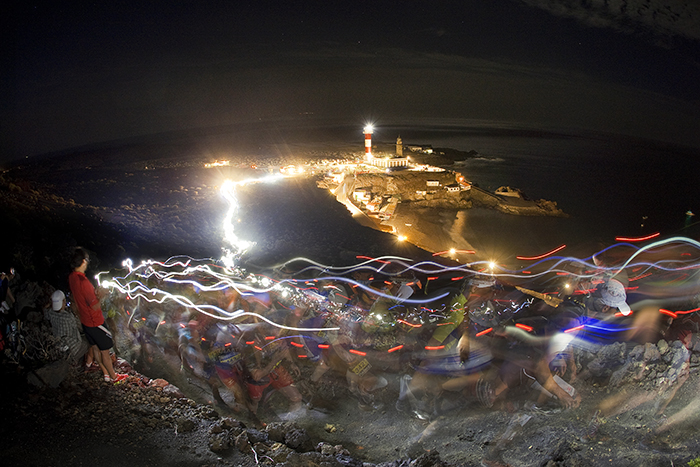 Headlamp beams illuminate the start from Fuencaliente lighthouse. Transvulcania 2012 © Transvulcania/La Palma
Headlamp beams illuminate the start from Fuencaliente lighthouse. Transvulcania 2012 © Transvulcania/La Palma
The next step for Julio was to get his proposal green-lighted by the islands government and armed with his route, race title and, just as importantly, his unwavering enthusiasm for the project this proved a rather straightforward task. “There were no big problems.” states Julio. Transvulcania was good to go. Now the handwork began.
Julio wanted desperately to launch the inaugural race in 2009, leaving very little time for promotion, planning and preparation, yet in May 2009 by the lighthouse in Fuencaliente on La Palmas southern tip the first edition of Transvulcania started. 378 hardy souls had signed up to run, with the Mens race being won by Salvador Calvo Redondo in a time of 9 hours and 36 seconds while Marta Prat Llorens took the womens title in 13,37.51. For Julio it was a seal of approval for his concept “The good reception confirmed our expectations, especially considering that the organization of the first edition was very quick and we had almost no time to promote it.” Transvulcania had become a reality and the trail running world had yet another truly spectacular race to discover.
Back in 2002 UNESCO, the United Nations educational, scientific & cultural organisation declared the whole island of La Palma a UNESCO biosphere reserve- which can be best described as a living laboratory promoting biodiversity & sustainability. This, combined with the fact that La Palma has never chased the kind of mass tourism seen on some of the neighbouring islands, has created a unique destination- one in which Julio is proud of. “La Palma has always worked to be a distinct destination, a quality destination. We think that is the right development of our island.” One would have to agree wholeheartedly with these principals upon seeing La Palma and especially the GR131 path that makes up the races route. Runners ascend on soft black volcanic sand close to the islands most recently active volcanos; San Antonio and Teneguía, through dense canary pine forests where delicate moss hangs like old spider webs from the branches above while the ground beneath is cushioned with pine needles, through misty clouds that spritz the skin with cool pure water and out into an expanse of cobalt blue sky along the spectacularly rugged crater rim, past giant telescopes and raw martian landscapes before descending through the clouds and pines and rocks- down and down to the black sand once again. The sand this time belonging to the beach at the idyllic Tazacorte, smoothed by the relentless beating of the Atlantic swells to a fine dark dust.
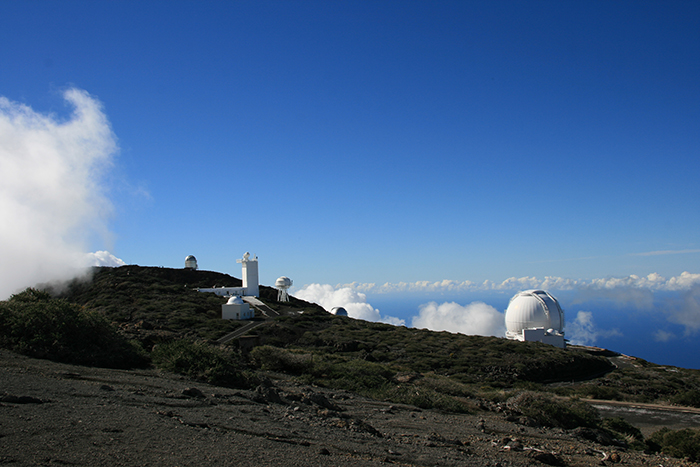 La Palma has some of the clearest skies in the world making it a astronomy hotspot. Roques de los Muchachos © Lauri van Houten
La Palma has some of the clearest skies in the world making it a astronomy hotspot. Roques de los Muchachos © Lauri van Houten
The following two years- 2010 & 2011- saw Transvulcania establishing itself as a major annual event for La Palma and the race numbers reinforced that belief. The numbers of runners competing almost doubled to 647 for the second years race while 2011 again surpassed expectations with over 800 signing up to run. While the participant numbers skyrocketed the winners times and subsequent course records tumbled- Spanish ultra-running legend Miguel Heras destroyed the mens field in both 2010 & 2011 with times of 8,09.32 and 7,32.11 respectively, and in doing so ran the course almost 2 hours faster than the winners time from the inaugural race. The womens times were even more impressive- Nerea Martinez won in 2010 in 10,53.33 and Mónica Aguilera in 2011 in 10 hours & 3 seconds or more than 3 and a half hours quicker than the original winning time. Buoyed by these performances and the foundations that 3 years of successful organisation brought, Julio- who had by now become the islands minister of tourism- decided not to rest on his laurels but instead take to the race to next level- for that he needed to look elsewhere, he looked upwards of course- he looked to the sky.
In 2011 The International Skyrunning federation were planning for change- a renewed vision. The global boom & growing interest in trail and mountain running had resulted in a renewed focus on Skyrunning, which in essence is racing at 2000 meter+ altitude in some of the most dramatic locations on earth. Since its inception in the early 90’s ISF co-founders Marino Giacometti & Lauri Van Houten have always stayed true to their founding principals- thin air, steep, technical & breathtaking- and by 2011 these principals were being embraced by an ever-increasing, ever-more-vocal audience. Skyrunning was hot, Lauri Van Houten explains, “In the beginning everyone thought we were crazy.” she says, before adding, “Now we realize we had been light years ahead – of the sport and the industry.” She like many fans of Skyrunning wondered what took the masses so long. “We thought it would catch on sooner! We weren’t prepared for a 20-year wait. We always believed in it and just ploughed on.” she explained to me recently. The wait was finally over.
The Skyrunning World series has been the cornerstone of the ISFs calendar since 2003- a series of events in some of the worlds best mountain ranges- Alps, Pyrenees, Dolomites & Rockies- ranging from Vertical Kilometer races to Mountain Marathons. As part of their revamped schedule for the 2012 season they planned to expand the World Series to include an ‘Ultra’ division- mountain races in distances beyond a marathon. Races like Transvulcania.
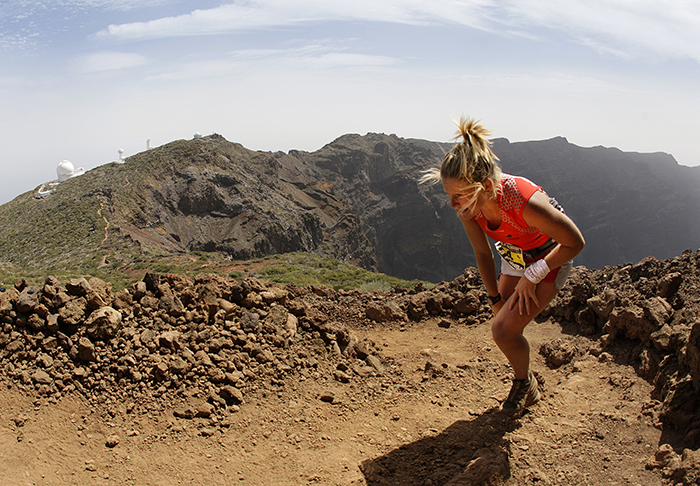 2012 Women’s Champion & course record holder Anna Frost © Transvulcania/La Palma
2012 Women’s Champion & course record holder Anna Frost © Transvulcania/La Palma
On La Palma a couple of months had passed since the third edition of Transvulcania. One day in July 2011, Julio picked up the phone in his office and dialled the Italian number for the ISF. “We knew of the existence of the International Skyrunning Federation and we were confident that Transvulcania embodied what was necessary to be a part of their international circuit.” Julio says before adding, “I wanted to invite Marino and Lauri to show them our island and the route of the race.” Back in Italy, despite not having been aware of the race on La Palma beforehand, Lauri was intrigued. “We didn’t know about the race before. We had always thought that the Canaries would make a good skyrunning venue for the altitude, so we were keen to go to La Palma & check it out. We especially liked the “sea to sky” concept, so wanted to have a look. We eventually went for a couple of days in November, 2011.”
La Palma makes me think of those sea-sirens of folklore- luring enamoured sailors, adrift in the vast oceans, with their beauty before crushing them on the coasts rocky shore- although in the case of La Palma its the sheer majesty of its trails that lure us runners only to crush the ill-prepared with the relentless gradient and technical nature of its terrain. It’s this beauty and these challenges that make the island and Transvulcania so enthralling. Upon arriving Lauri too was quickly smitten. “Rugged, dramatic….stunning. You need to go the summit at Los Muchachos to get the real feel of the island. You’re often above the clouds – with the Gamma Ray catcher and the observatories. On one side is the Sahara, the other, Florida…The weather is also split in two – on the east side it rains more and it gets less sun…all this on a 48 km long island! Oh yes, and the black sand on the beach!” She was also impressed with the man who had been instrumental in both creating the race and approaching the ISF for involvement. “Julio is both far-sighted and receptive, ideal ingredients for progress.” she enthuses. When it came time for Lauri and Merino to leave the island Julio had organised a going away party. “The island people made us extremely welcome. On our departure they organised a party in our honour with a “cochino asado” (a whole pig spit roasted).” says Lauri. It had already been decided- Transvulcania was to become the first ever race in the new Skyrunning Ultra Series. Just six months later, in May 2012, the race would be under the gaze of the ultra & mountains running worlds media like never before. La Palma was about to be put well and truly on the map.
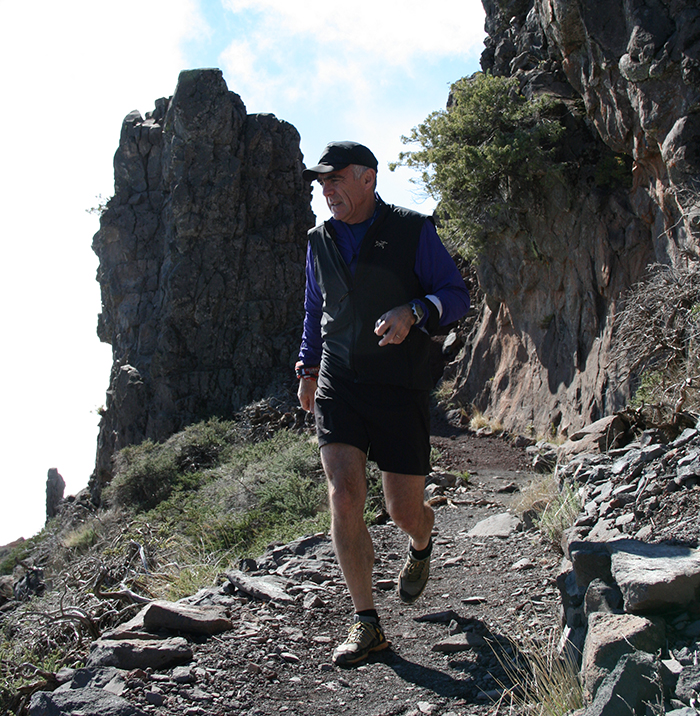 Skyrunnings co-founder Marino Giacometti checks out the terrain during his visit in 2011 © Lauri van Houten
Skyrunnings co-founder Marino Giacometti checks out the terrain during his visit in 2011 © Lauri van Houten
From Tazacorte looking into and back towards the east face of the caldera there often sits a wall of stone grey, heavy looking threatening clouds that flow slowly over the craters rim. Viewed as a high-speed time lapse it appears as if these clouds are overflowing the land behind and spilling constantly into the crater before quickly evaporating leaving the little port town under blue sky and burning sun. Its all part of the unique micro-climate that exists there. It is fitting then that La Palma was the location for the perfect-storm created by Transvulcania & The International Skyrunning Federation, as well as a new breed of industry sponsored athletes & a passionate, social-media savvy community that swept over the island almost 12 months ago. Transvulcania 2012 saw what has been called the best starting line-up ever for a mountain race. Dakota Jones & Anna Frost both ran astonishing races to finish in 6,59.07 & 8,11.30 respectively. It really felt as if a new global era in our young sport had been ushered in, it was exhilarating. It will be hard to top.
Julio Cabrera Rochas sits in his office and looks out the window. He has read all about Tranvulcania 2012. He has read all the glowing reviews, athletes race-reports & praise from the worlds press. He knows there is a lot to live up to for 2013. “I’m aware that Transvulcania 2012 reached its highest point and now we have to work hard to improve ourselves once again, it’s complicated but we’ve been working for a year to get it right and we have many surprises in store for both the runners & the general public, they are going to enjoy another year on the island of La Palma that is for sure.” I, for one, don’t doubt him for a second.
Transvulcania 2013 takes place on the 11th May.
Ian Corless from Talk Ultra has an excellent preview of the Men & Women to watch out for in this years race.
Check out Christoph Malin’s amazing time lapse video from La Palma below

Thanks for reading, if want to share the interview click and copy the link below//Robbie, RunTramp.

